|
Getting your Trinity Audio player ready... |
Softgel Support Equipment: The Ultimate FAQ Guide
Softgel support equipment : In the realm of softgel capsule manufacturing, the encapsulation machine itself forms the core of production, but without the necessary supporting equipment, the production line would not be complete. Softgel support equipment, such as dryers, polishers, sorting machines, and packaging devices, play a crucial role in optimizing the efficiency, quality, and consistency of softgel capsules. The role of support equipment comes into play before and after the softgel encapsulation process, ensuring that the capsules are produced, polished, and packaged properly for distribution.
This comprehensive FAQ guide aims to walk you through the essential softgel support equipment, explaining their purposes, functionality, advantages, disadvantages, and operational processes. Whether you are new to softgel manufacturing or looking to understand the intricacies of the process, this guide has everything you need to know.
1. What is Softgel Support Equipment?
Softgel support equipment encompasses all the machinery and tools used in the production and finishing stages of softgel capsules, excluding the softgel encapsulation machine. These machines provide auxiliary functions that ensure the softgel capsules are correctly processed, polished, sorted, inspected, and packaged before they reach the consumer.
Key softgel support equipment includes:
- Drying equipment (tumble dryers, drying trays)
- Sorting machines
- Inspection machines
- Polishing devices
- Pulverizing machines
- Packaging equipment
Each of these plays a vital role in the softgel production line to improve efficiency and ensure the final product meets quality standards.
2. What are the Uses of Softgel Support Equipment?
Softgel support equipment serves a wide variety of purposes during the manufacturing process. Each type of equipment addresses a specific need in the softgel production line. Below are some of the primary functions and uses of softgel support equipment:
• Drying Softgel Capsules
After encapsulation, softgel capsules contain residual moisture that must be removed to prevent degradation and ensure stability. Various drying machines such as tumble dryers and drying trays are used to eliminate excess moisture from the softgel capsules, ensuring they are fully dried before moving on to the next steps.
• Sorting Softgel Capsules
Sorting machines are essential for organizing softgel capsules by size, shape, or any other distinguishing features. The sorting process helps ensure that defective capsules or those that do not meet the required quality standards are separated from the rest. Sorting machines can categorize capsules based on size and shape, ensuring uniformity in the final product.
• Inspecting Softgel Capsules
Inspection machines are used to detect any defects or damage in softgel capsules. These machines examine the integrity of each capsule, checking for issues such as cracks, leaks, or improper sealing. If any capsules are found to be damaged, they are removed from the production line, ensuring only high-quality products proceed to packaging.
• Mixing Ingredients
Before softgel capsules are produced, the ingredients, including gelatin and active pharmaceutical ingredients, must be thoroughly mixed. Several types of mixing machines are used to ensure that all ingredients are homogenously combined. For instance, gelatin mixing machines blend gelatin components, while medicine mixing tanks combine active pharmaceutical ingredients for the filling.
• Heating Ingredients
Certain ingredients, particularly gelatin, need to be melted and heated to a specific temperature to form the gel-like substance required for softgel encapsulation. Specialized heating machines, such as gelatin mixing and melting tanks, are used to heat and maintain the proper temperature of these ingredients to ensure the consistency and quality of the gel.
• Polishing Softgel Capsules
After softgel capsules have been dried and sorted, they are polished to remove any debris, dust, or imperfections that may have accumulated on their surface. Polishing machines like the softgel polisher help to clean the capsules efficiently, preparing them for the next stage in the production line or packaging.
3. What is a Softgel Polisher?
A softgel polisher is an electromechanical device used to clean and polish the surface of softgel capsules. The machine removes dust, debris, and any other impurities, ensuring the capsules are visually appealing and free from any foreign particles that could compromise quality. The polishing process is crucial in ensuring that softgel capsules are not only clean but also presentable for packaging.
4. What are the Advantages of Using a Softgel Polisher?
Using a softgel polisher offers several advantages that significantly improve production efficiency and product quality. These benefits include:
• Swift and Automatic Polishing
The softgel polisher operates automatically, which means it can clean and polish a large number of capsules in a short amount of time. This automation reduces the need for manual labor and ensures that thousands of capsules can be polished every hour.
• Increased Production
Because the polisher operates at high speeds, it contributes to increased production rates. With faster polishing, more softgel capsules can be processed in less time, boosting overall manufacturing output.
• Easy to Use and Operate
Softgel polishers are equipped with user-friendly interfaces, making them easy to operate. Operators can control the machine settings easily and adjust them to suit the production requirements.
• Cost-Effective Polishing Solution
By automating the polishing process, softgel polishers eliminate the need for manual labor, saving on labor costs. This results in a more cost-effective method of polishing capsules.
• Enhanced Efficiency
The precision and accuracy of the softgel polisher ensure that no capsule is left unpolished. This high level of efficiency helps to maintain consistent product quality.
5. Does the Softgel Polisher Have Disadvantages?
Despite its numerous benefits, the softgel polisher does come with some challenges, including:
• High Initial Cost
The primary disadvantage of a softgel polisher is the high initial cost of purchasing the machine. The capital expenditure required for these machines may be a barrier for some manufacturers, especially small-scale producers.
6. What are the Main Parts of a Softgel Polisher?
Softgel polishers consist of several key components that work together to achieve efficient polishing. The main parts of a softgel polisher include:
• Baskets
The baskets are the main part of the machine where the softgel capsules are placed during the polishing process. These baskets rotate and tumble to ensure the capsules are polished from all angles.
• Electrical System
The electrical system powers the entire machine, ensuring that all components function properly during the polishing process.
• Guide Plates
Guide plates help to direct the flow of capsules within the machine, ensuring that they are evenly distributed and polished.
• Outer Frame
The outer frame provides structural support for the entire machine, ensuring that all components are securely held in place during operation.
• Outlet
The outlet is where the polished softgel capsules are discharged after the polishing process is complete. The outlet is designed with a gentle slope to allow capsules to exit without being damaged.
7. How Does a Softgel Polisher Work?
The softgel polishing machine operates in a series of steps to ensure that softgel capsules are cleaned and polished effectively:
Step One: Loading the Softgel Polisher
The softgel capsules are loaded into the polishing machine, typically automatically in a fully automated production line. Before starting, it is important to ensure the machine is set up correctly.
Step Two: Actual Polishing
Once powered on, the machine begins to rotate the baskets containing the softgel capsules. The rotation helps remove dust and debris from the capsules’ surface.
Step Three: Discharging Softgel Capsules
After polishing, the softgel capsules are discharged through the outlet. The capsules are now ready for the next phase of production, which may involve inspection and packaging.
8. What is a Softgel Pulverizer?
A softgel pulverizer is another essential piece of support equipment used to recycle mis-shaped or defective softgel capsules. Instead of discarding these damaged capsules, the pulverizer separates the outer gelatin shell from the inner fill material, allowing the raw materials to be reused.
9. What are the Advantages of Using a Softgel Pulverizer?
The softgel pulverizer offers several advantages, particularly when it comes to minimizing waste and saving resources:
• Cost Savings
By recycling damaged softgel capsules, manufacturers can recover valuable raw materials, including gelatin and active pharmaceutical ingredients. This reduces overall material costs.
• Labor Cost Reduction
The pulverizer operates automatically, reducing the need for manual labor to separate the damaged capsules.
• Clean Separation Process
The separation process is clean, with the stainless-steel construction of the pulverizer ensuring no contamination during the operation.
• Easy to Operate
Like other softgel support machines, the softgel pulverizer is easy to operate, typically featuring a user-friendly control panel.
• Simple and Compact Structure
The compact design of the pulverizer makes it easy to move and set up within the production line, while its sturdy structure ensures reliable operation.
10. What are the Disadvantages of Using a Softgel Pulverizer?
While a softgel pulverizer has several benefits, it also has its drawbacks:
• Integration Challenges
Integrating the pulverizer into an existing production line can be difficult, particularly if there is no automatic supply of defective capsules to the machine.
• High Initial Investment
The cost of purchasing and installing a softgel pulverizer can be substantial, requiring significant capital investment.
11. What are the Main Parts of a Softgel Pulverizer?
The main components of a softgel pulverizer include:
• Hopper
The hopper is where damaged softgel capsules are placed before the separation process begins.
• Discharge Chute
The discharge chute ensures the clean separation of the capsule shells and inner fill materials, which are collected in different areas.
• Knife Blades
The knife blades are responsible for slicing the softgel capsules open, allowing the contents to be separated from the shell.
• Perforated Drum
The perforated drum helps to separate the inner liquid contents from the outer gelatin shell.
• Stainless Steel Container
This container collects the separated inner fill material.
• Electrical System
The electrical system powers the entire machine, enabling the knives and other components to function.
• Control Panel
The control panel allows operators to manage and configure the machine’s operation.
12. How Does a Softgel Pulverizer Work?
The softgel pulverizer works by utilizing a series of mechanical processes to separate the outer shell of the capsule from the inner contents. Here is a step-by-step breakdown of how it works:
Step One: Preparation
The machine is prepared, and the damaged softgel capsules are loaded into the hopper.
Step Two: Separation Process
The pulverizer’s blades slice open the capsules, allowing the inner fill material to be extracted and separated from the shell.
Step Three: Discharge and Collection
The separated contents are discharged through the perforated drum, where the liquid fill material is collected, and the capsule shells are sent to a different discharge chute.
This comprehensive understanding of softgel support equipment can guide manufacturers in optimizing their production processes, enhancing efficiency, and maintaining the highest standards of quality.



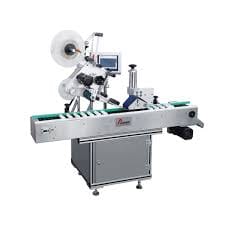
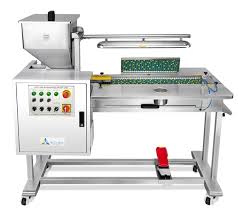
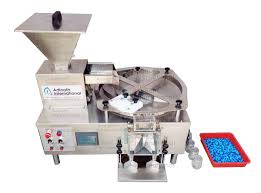
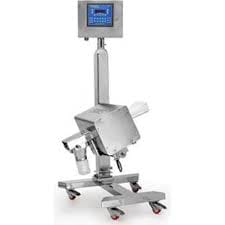



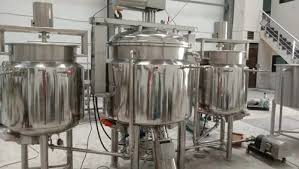
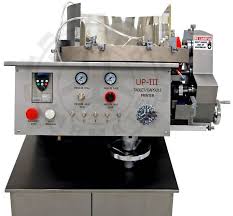




Leave a Reply